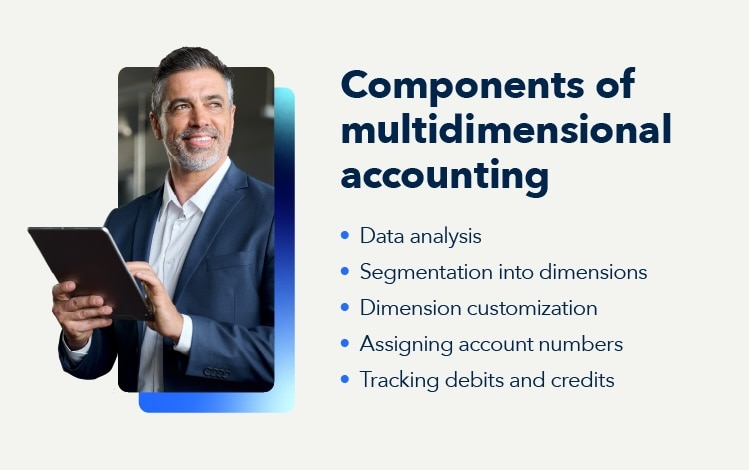Advantages of upgrading to multidimensional accounting
Multidimensional accounting is a powerful tool for growing, complex, and multi-entity businesses—helping streamline operations, improve financial reporting, and enhance decision-making. And instead of trying to modernize your current ERP solution, you might find that replacing it with a new system is more impactful.
The value of embracing a new multidimensional accounting system can include:
Simplified chart of accounts
A traditional chart of accounts can easily become bloated, with thousands of account codes as new entities or projects are added. With a multidimensional approach, you can reduce this complexity.
Example: A global SaaS company with products in the US and Europe might have a separate revenue account for each product in each region (like "4001 - US Product A Sales"). With multidimensional accounting, they can have just one account, "4000 - Product Sales," and use dimensions for Region and Product to track everything.
Allocated payments to the correct department or entity
Manual allocation of payments and expenses is a common source of errors and delays. Multidimensional systems automate this process, ensuring accuracy.
A recent survey of finance leaders found that 82% of organizations still rely on manual processes for their financial close and record-to-report activities, which leads to prolonged, error-prone cycles. Automating these tasks with a multidimensional system directly addresses this inefficiency.
Accurate and consolidated reporting
Consolidating financial data across multiple entities without manual adjustments is a major challenge for many companies. Multidimensional systems provide a single source of truth, ensuring consistent and transparent financial reporting.
Example: A manufacturing company might have a single cloud services bill for its entire organization. Instead of manually splitting the bill for each department based on usage, a multidimensional system can automatically allocate costs to the R&D, Production, and Operations cost centers based on pre-set rules, ensuring each department's budget is accurately charged.
Easier intercompany transactions
Intercompany transactions are a significant bottleneck, particularly for global, multi-entity organizations. Automating the recording and reconciliation of these transactions saves a huge amount of time.
According to a 2023 study by BlackLine, 99% of large multinational companies report facing specific challenges with intercompany financial processes. The study also revealed that these issues are not just operational hurdles; they are directly impacting business outcomes and putting unsustainable pressure on finance teams.
Any solution to this issue provides immense value to your business.
Visibility into trends in your business
The ability to slice and dice data across multiple dimensions allows you to spot trends and make informed decisions faster. You can then pinpoint the root cause and make immediate, data-driven decisions to fix the problem, such as re-evaluating the pricing model or improving the onboarding experience.
Example: With dimensions, a SaaS company could instantly analyze its churn rate. With multidimensional reporting, a CFO could see if churn is higher among customers who use a specific product feature or if it’s isolated to a particular region or marketing campaign.







 Tracking details like location or product line through a chart of accounts can be cumbersome. Instead, multidimensional accounting software, like IES, encodes those details at the transaction level using tags, classes, or other categorizing elements.
Tracking details like location or product line through a chart of accounts can be cumbersome. Instead, multidimensional accounting software, like IES, encodes those details at the transaction level using tags, classes, or other categorizing elements.
 A multidimensional accounting solution is especially useful if you’re scaling across multiple locations or entities. It allows you to drill down into costs and revenue drivers that traditional accounting systems overlook.
A multidimensional accounting solution is especially useful if you’re scaling across multiple locations or entities. It allows you to drill down into costs and revenue drivers that traditional accounting systems overlook.




